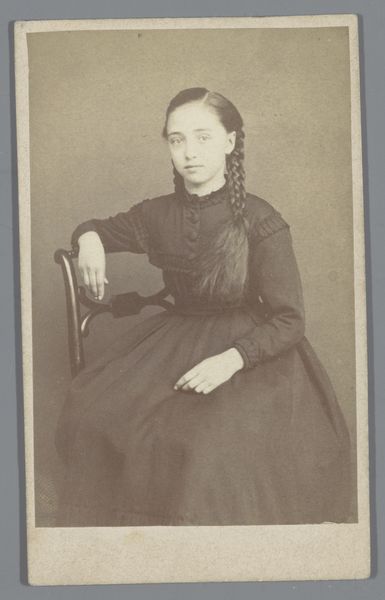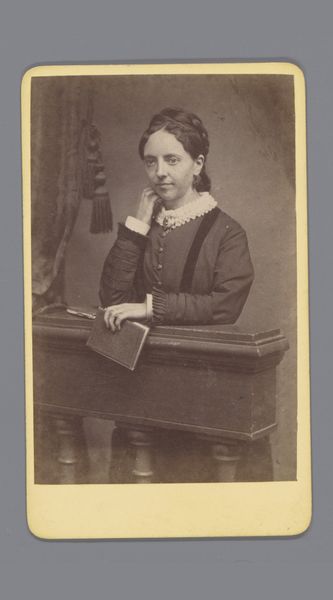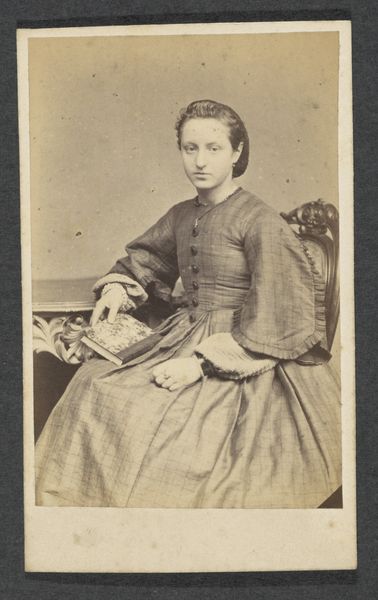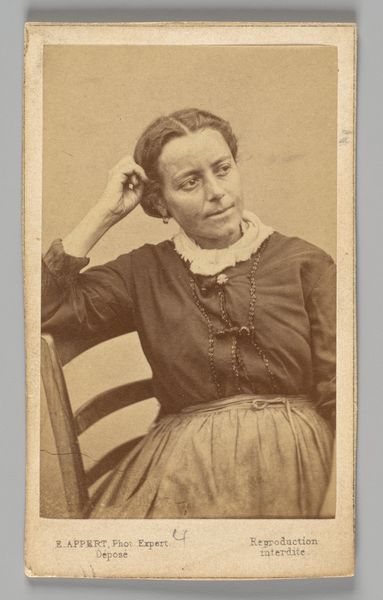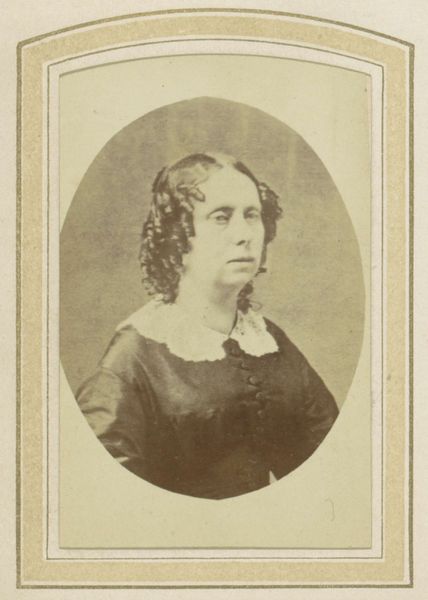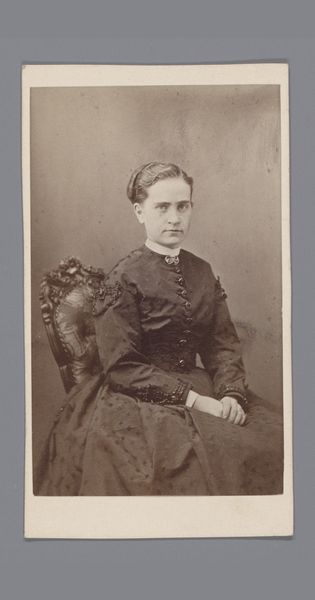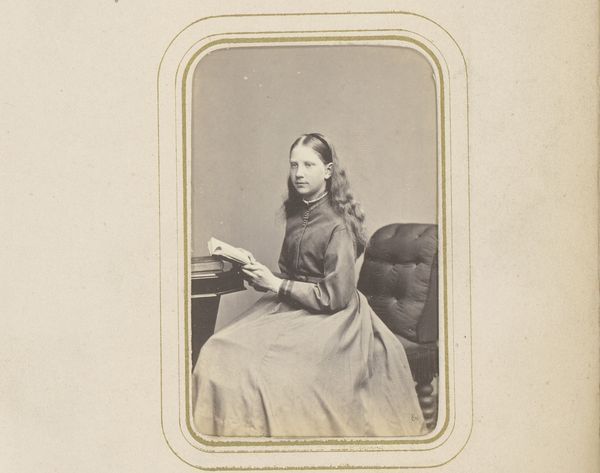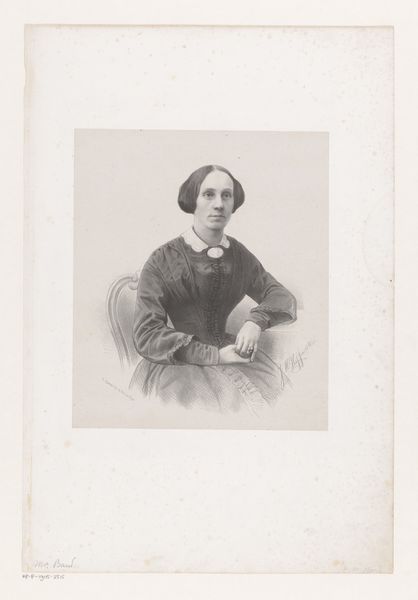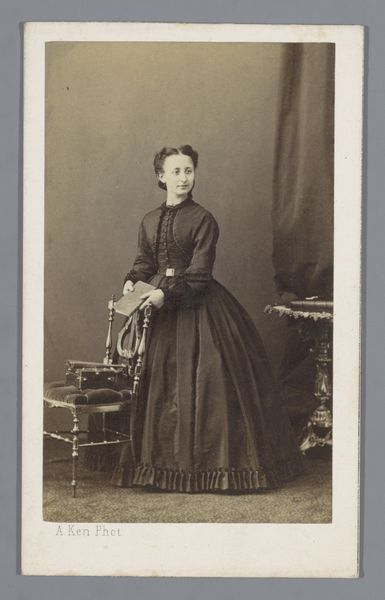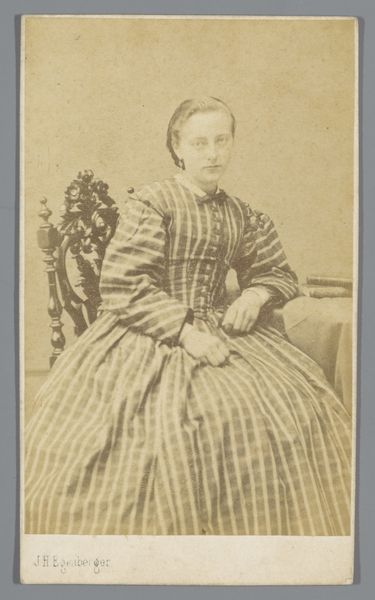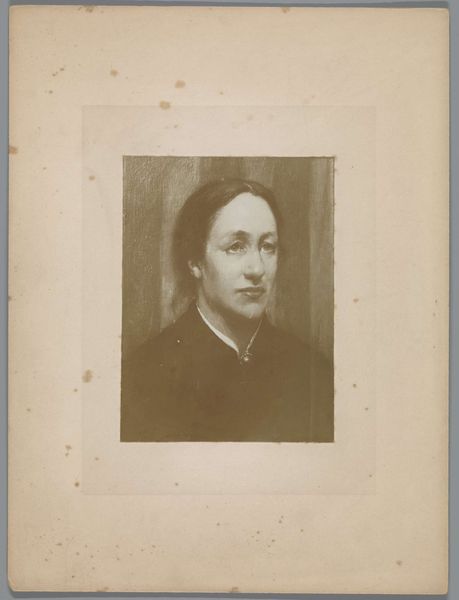
photography
#
portrait
#
photography
Dimensions: height 107 mm, width 63 mm
Copyright: Rijks Museum: Open Domain
Curator: Before us we have a portrait by François Joseph Delintraz, titled "Portret van een onbekende jonge vrouw," placing its creation somewhere between 1859 and 1868. It’s rendered through the photographic medium. What is your initial reaction to it? Editor: There's a palpable melancholy in this image, isn't there? Her gaze is direct, but there's a weight to it. A sort of Victorian seriousness that the sepia tone amplifies. Curator: That seriousness, I think, stems from the sitter's position in society at that moment in time. Consider the societal expectations placed on women during the mid-19th century. Photography was becoming more accessible, yet the performative nature of portraiture would have underscored prevailing ideologies about femininity. The sitter's expression becomes a site of complex negotiations. Editor: You're right, and beyond just the emotional register of her face, notice how all the accessories work together symbolically. Her hands, carefully placed and posed, are a window into Victorian social structures where etiquette was considered extremely important, also look at the small pearl earring she has. Curator: Indeed. What resonates with me is how the anonymity amplifies the possibilities of analysis. It becomes more about universal experiences of womanhood within certain historical constraints. We are left with her presence. Her silent declaration that ‘I was here’ captured in the photographic lens. Editor: A haunting presence, almost spectral given the soft focus around the edges. But that soft focus is perhaps more technical than metaphorical. Curator: Or perhaps it is both! Photography in that period also explores how people wanted to see themselves presented. This interplay between material constraint and artist’s choice underscores a potent point, because Delintraz's piece lets us confront prevailing sociohistorical norms about identity representation and how people pushed the boundaries. Editor: Seeing these symbols through her, then allows the viewer to transcend mere historical record; her emotions are potent today. Curator: It provides us an avenue to understand both past constraints and persistent resonances related to gendered identity today. The past really informs how to navigate present norms. Editor: Very well said. A final resonating glimpse into an historical individual.
Comments
No comments
Be the first to comment and join the conversation on the ultimate creative platform.

